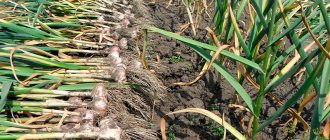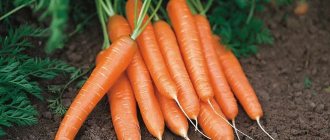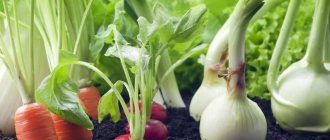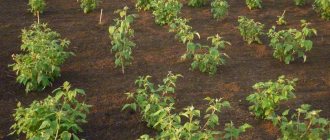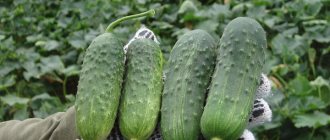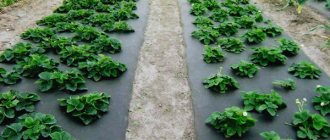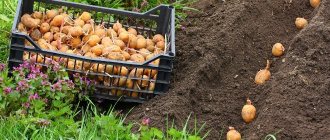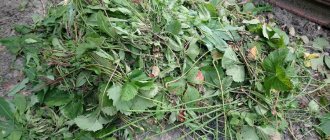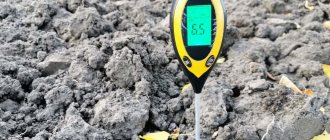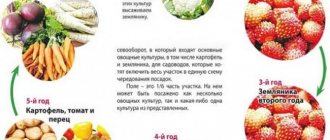Benefits of rotating crops in the garden
Crop rotation is considered an element of soil and plant care. This is a scientifically based method that involves alternating crops on a site, which allows you to influence the quality characteristics of the soil, as well as yield indicators.
The essence of the method is that certain plants need elements that accumulate in the soil. What are the advantages and principles of crop rotation:
- Helps maintain the correct balance of nutrients in the soil.
- Helps avoid deficiencies of certain elements.
- Reduces the risk of erosive changes.
- Forming plants into groups will greatly facilitate procedures aimed at caring for the crop.
- Reduces the risk of developing fungal and other diseases, and also minimizes the likelihood of plant damage by pests.
If a gardener alternates crops on a plot, this allows him to:
- save the soil from depletion, fertilize less often;
- increase the yield rate;
- improve the quality characteristics of the soil without the use of additional effort.
Since cucumbers are very demanding on the soil, they do not always receive the necessary “nutrition”. The culture needs nitrogen, phosphorus, and carbon dioxide. If you plant them in the same place, the yield will drop. And the poor soil will have to be “reanimated” over several years by applying various fertilizers.
Companion plants for cucumbers
A good neighbor is needed not only by humans, but also by plants. This point is also important because it helps plan plantings for one season.
Recommendations for what to plant next to cucumbers:
- Legumes, especially various varieties of beans. When harvesting legumes, it is better to cut them off, leaving the roots in the soil - more nitrogen will be retained in the soil.
- Corn will be an excellent neighbor; it protects from the wind.
- Garlic will help cope with diseases, such as bacteriosis.
- Dill increases productivity.
- Spinach and lettuce release substances that help cucumbers develop roots and protect against overheating.
- Among the greens, you can also plant onions and fennel nearby.
The question of whether to plant tomatoes and cucumbers next to each other or not still remains open. And each gardener answers it independently, based on his own experience. At the same time, there are directly opposite opinions - some recommend this combination, while others are categorically against such a neighborhood.
If you look at it from a scientific point of view, the roots and leaves of these plants do not emit substances that are dangerous to each other, so their proximity is acceptable. The only difference will be in the irrigation technology.
Useful table: which plants can be planted nearby and which ones should not be planted
Good and bad vegetable combinations
Suitable predecessors for culture
Since cucumbers place increased demands on the soil, they cannot always be planted after certain crops. Some plants need the same elements as our cucumbers. If they do not receive the necessary elements during the growth process, this will significantly affect the yield.
It is believed that one crop should not be planted in the place where it grew previously. A similar principle applies to cucumbers. They are not planted in the same place more than 2 times (it is not recommended to cultivate them for 2 years).
Peas
It is not picky about the soil, it restores soil parameters well, and helps to achieve the desired result. Peas will return the necessary characteristics to the land, but they will have to be cultivated for at least 2 years.
Beans
It also tolerates “neighborhood” well with cucumbers. If you decide to plant it after cultivating cucumbers, you can’t go wrong.
Beans
As for legumes, they perfectly restore the soil. Allow the soil to “rest”. Therefore, gardeners often plant them on the site after cultivating cucumbers and other “demanding” plants.
Potato
If possible, plant root vegetables in the place where cucumbers previously grew. Potatoes will help the soil normalize nitrogen, phosphorus and carbon dioxide levels. The potatoes are dug up, but the tops can be left on the site and dug up.
See also
Description of the cucumber variety Pasalimo F1 and technical data of the hybrid
Read
Onion
Since onions are root vegetables, they are perfect for restoring soil indicators.
Zucchini
They are classified as the closest relatives of cucumbers; for this reason, zucchini is not cultivated in those parts of the site where this crop previously grew.
Cabbage
It is not recommended to plant the vegetable, since cabbage will further deplete the soil. It will take a long time to restore the soil.
Radish
Radishes do not have high requirements; they are often planted after cucumbers, which helps restore and normalize soil characteristics.
Pepper
Nominally, peppers can be planted after cucumbers. But it is better not to do this for several reasons: peppers are picky about the soil, require careful care and significantly deplete the soil. It is better to hold off on planting peppers and postpone it “until better times.”
Who to choose as neighbors to cucumbers
If you take into account all the capabilities and characteristics of plants, then they can be grown in pairs. Good neighbors will help you cope with pests and diseases. They will not compete for the sun and microelements.
Of the spices, only dill can withstand its cucumber neighbor. But between salads and potatoes, it is advisable to plant peas, beets, and radishes.
Tomatoes grow well before and after greens, but they don’t get along together. And there are good reasons for this:
- They need different microclimatic conditions;
- Watering is strictly individual;
- Overgrown tomato bushes will inhibit the green vegetable.
Cucumber gets along well with corn, as it protects it from the winds and serves as a support. Garlic, as a natural antiseptic, helps cope with diseases. Spinach salad protects cucumbers from overheating, and dill helps increase yield.
Eggplant and peppers are suitable companions for greens. They are grown in garden beds and greenhouses. You only need to guide the cucumber vines so that they do not drown out their neighbors. Powerful sunflower stems perfectly support cucumbers, acting as supports.
After what crops should cucumbers not be planted?
There are also plants in nature that take all the useful substances from the earth. After cultivating them, the soil must rest, otherwise it is unlikely that a good harvest will be obtained.
cucumbers
By changing the types of cucumbers, the gardener risks being left without a harvest. His efforts will be unsuccessful. After all, in 2-3 years the crop will take all the necessary elements from the soil and change its indicators. It will take three or more years to restore the land.
Pumpkin
It will not help restore soil parameters; it cannot be planted after cucumbers, since there is no point. Cultivating pumpkins is a difficult task, and this plant is considered the closest relative of the cucumber.
Zucchini
Zucchini will not grow on land where cucumbers previously grew. The harvest will be possible, but it will be meager.
Strawberry
It is very demanding on the soil; strawberries can completely deplete the soil in 3 years, so you should not plant them in the garden after cucumbers. You won’t be able to get a good harvest; your efforts will be wasted.
Crop rotation rules: what is it?
There are almost no crops that can be grown annually in the same bed. We, of course, know about potato fields that rarely change their location, but potatoes are almost the only vegetable that can be planted in one place for 2-3 years in a row. You don’t have to change the bed for tomatoes for a couple of years, the same goes for beans or peas. But then these crops should still be moved to a new location for several years. This is due to banal reasons.
One reason is that different vegetables have different nutritional requirements. Some consume more nitrogen, others - potassium, etc. Yes, there are simply “gluttons” and cultures that are content with little. And therefore, when planting something in one place every year, the reserves of specific nutrients are quickly depleted, and it is very difficult to establish a balance by simply applying fertilizers. It is necessary to allow vegetables with different food preferences to grow in the garden for several years.
Various reference tables take into account, first of all, the food preferences of garden residents
The second reason is the accumulation of pathogens and pests, which can vary greatly among different crops. The third reason is similar: each vegetable leaves behind in the garden the products of nutrient processing, which can be toxic, and over a few years their concentration can exceed reasonable limits.
From a nutritional point of view, the correct rotation of crops should look like this: first, some of the most “gluttonous” vegetables are planted on a well-rested and fertilized bed, then others, with less nutritional requirements, are planted for 2-3 years, then the soil is allowed to rest, holding fallow it, apply large doses of fertilizer and start all over again.
Considering all the reasons for the need for crop rotation, its main provisions can be formulated in just three phrases:
- crops with deeply penetrating roots should be alternated with those whose root system is in the surface layer;
- You should not plant vegetables one after another that have a similar set of diseases and are affected by the same pests;
- the subsequent crop must have different food “preferences”.
Based on these provisions, it is permissible to grow many different vegetables after cucumbers; the list of prohibited ones is small.
We are planning to plant next year in the garden after the cucumbers.
The decision on how to restore the soil after planting cucumbers is made in advance; preference is given to crops that can be planted on the site in the fall. They will begin to sprout in the spring or will have time to ripen before the cold weather.
Green manure crops for sowing in autumn
Green manure is an excellent choice; its characteristics allow you to quickly restore the quality of the soil.
Vika
The crop is sown at the end of summer, by the end of autumn you can mow down the vetch, and then dig up the ground without removing it.
Lupine
Not a bad option for restoration, but this plant leaves large roots. You'll have to choose them. Lupine is also mowed, and then the soil is dug up, which allows it to be cleaned of harmful substances.
Buckwheat
If you prefer this culture, then try the following manipulations to increase the effectiveness of the procedures:
- Remove 20 centimeters of soil and replace it.
- Then sow buckwheat on this land.
- When it grows up, they mow it.
Attention! It is not prohibited to combine, that is, to combine several plants, planting them simultaneously on the site. Gardeners often plant oats and vetch together.
Legumes
Summer residents believe that legumes improve the soil well. But it is not necessary to plant legumes in the area where cucumbers grow. You can choose another place, sow beans there, then mow them and use them as mulching material.
See also
Characteristics and description of cucumber variety Dalnevostochny 27, cultivation
Read
Green manure will not only help clean and improve the soil, it will attract earthworms, which will positively affect the characteristics of the soil.
What to plant from green manure in spring
Such plants allow the soil to rest; they are often planted on poor soils in order to improve their quality. If you cultivate cucumbers in a greenhouse or plant them in the ground, then think about sowing the soil with green manure after the cucumbers.
Oilseed radish
This is an annual plant reaching 1.5 meters in height. Radish has several advantages, due to which it manages to influence soil indicators:
- has a long system of root tubules through which nutrients flow;
- protects the soil from erosion, promotes its loosening;
- oily radish provides the soil with a drainage system, while accumulating moisture in the upper layers of the soil;
- in rainy weather or under unfavorable climate conditions - protects against erosion.
Rape
A kind of green fertilizer that quickly decomposes and helps improve the quality of the soil. Rapeseed helps reduce soil acidity; planting it will increase water conductivity and moisture capacity.
Mustard
Planting this crop on land where cucumbers previously grew will help solve many problems. Mustard helps release nutrients from deep layers of soil. Mustard mowed in the fall will attract earthworms, and they will be able to saturate the soil with useful microelements.
Phacelia
It differs from other green manures in that it rapidly gains strength - this peculiar feature does not allow weeds to grow.
Tip: when the land is empty, it is quickly filled with weeds. If you plant phacelia on your plot, you won’t have to worry about weeds.
This plant attracts not only its growth, but also its decorativeness. You can plant green manure in a small area, which is very convenient.
The first year - cucumbers, but what about the second?
The root system of cucumbers is located in the upper soil layers. Constant digging only moves the soil from the lower to the upper layers, but the culture again impoverishes it. Over time, the soil is completely depleted.
To prevent this process, other crops with a more powerful root system are planted in place of cucumbers. They are able to partially restore soil balance.
In open beds
For open ground, plantings from root crops are suitable:
- Potato;
- Beet;
- Radish;
- Carrot;
- Turnip.
Garlic, celery, onions, and tomatoes will produce a good harvest. Legumes perfectly increase soil fertility, saturating it and preparing it for corn, tomatoes, peppers, and zucchini.
As for cabbage, it is advisable to allocate a different place for it. After cucumbers, cabbage seedlings will significantly deplete the soil. It will be extremely difficult to revive the beds.
In greenhouses
If open soils have a chance to recover due to the contiguity of crops, then greenhouse soil is completely isolated and its fertility depends only on plantings and fertilizers.
Having removed almost all the nitrogen from the soil, cucumbers saturate it with phenolic compounds. Therefore, after the snack vegetable, you need to plant crops that develop in the ground or with developed roots:
- Peppers;
- Eggplant;
- Parsnip;
- Early potatoes;
- Root parsley;
- Celery.
These vegetables are not afraid of harmful compounds left behind by cucumbers. To heal the soil, after harvesting the cucumber tops, white mustard is planted as green manure. When its shoots rise above the ground, they begin digging. Next, the beds are covered until spring with black covering material or film.
What vegetables can be planted after cucumbers?
When you decide to alternate crops on your site, take into account the requirements of the plants - this is the main rule that should be followed. If you have cultivated cucumbers for at least 2 years, then give preference to legumes, potatoes, and other root vegetables. But it is best to plant garlic or onions on the plot. In greenhouse conditions, preference is given to cereal crops, but when cultivating plants in open ground, the rules are different.
Garlic
Capable of relatively quickly restoring soil characteristics. Garlic can be planted after the cucumber season ends. When the fruits are collected, and this happens in August-September, you can dig up the bed and use it for planting garlic.
What soil and growing conditions do cucumbers need?
Cucumbers love fertile soil. This should not be forgotten when growing them both in open ground and in a greenhouse. It is best if the soil composition is loamy or sandy loam. Heavy and acidic soils are not suitable for cucumbers. The acid reaction must be neutral or slightly alkaline. The optimal indicator would be a pH of 7.
Soil acidity can be determined by using litmus paper or by observing weed growth. If horsetail, plantain, horse sorrel and heather grow on the site, it means that the acidity is high and it needs to be reduced artificially.
You don’t need to do anything if you encounter weeds such as wheatgrass, clover, common chamomile, coltsfoot, and field bindweed. These plants are an indicator of weak soil acidity. Such land is quite suitable for growing cucumbers. The beds are prepared in the fall.
Acidic soil is limed using ash, lime, and dolomite flour. For low-acid soil, alkaline liquid fertilizers are used. In spring, the surface of the soil is dug up deeply, after which humus is added. Then the bed is watered abundantly and covered with film for 2-3 days. It doesn’t matter whether you are going to sow seeds or plant seedlings - the bed is prepared after the threat of frost has passed.
Helpful advice! It is recommended to grow cucumbers in raised beds. In this case, the harvest will be significantly greater.
7 days after preparation, you can plant cucumbers.
The subtleties of growing cucumbers: video
Please note that cucumbers are a crop that requires crop rotation and it is better to strictly follow agrotechnical rules. If you follow all the recommendations, you will be able to avoid problems with the incidence of this crop and harvest a good harvest of green pimply cucumbers, which you can happily eat fresh and use for preparing preparations for the winter.
If it is not possible to alternate
Not every gardener can boast of a large plot of land where he can freely expand, engaging in systematic crop rotation. Most people use 6 acres (and sometimes even less), where they want to fit everything in at once.
It is allowed to keep one crop without relocation in the same area of the garden, but then it is advisable to create suitable conditions for this.
- After harvesting pumpkin crops, the soil in the garden should immediately be fed with organic matter (manure, compost, humus) to enrich the depleted substrate.
- Autumn digging of the bed to the full depth of a shovel is required - this will destroy the nesting places of pumpkin crop pests.
- In order to avoid the development of diseases, in the spring you should begin to preventively treat the beds with antibacterial compounds and carry out the fight with folk remedies throughout the entire growing season.
- To increase the yield, cucumbers must be fed - during budding, mineral and organic fertilizers are used, and during the fruiting period it is better to use nitrogen-potassium fertilizers.
We suggest you read: Spraying cucumbers with milk with iodine: the benefits of feeding
However, even these measures may not be effective if cucumbers are regularly planted in the same place. The maximum period that allows vegetable bushes to develop well and produce good harvests is 3 years. Then it is advisable to remember the rules of crop rotation and relocate crops.
So, having become the owner of a summer cottage, you should first study the features of growing vegetables and other crops, so that you can then enjoy a good harvest, and not complain about unsuccessful attempts to grow something.
Cucumbers are a demanding crop that prefers comfortable conditions. If you develop the right strategy for growing this representative of pumpkin plants, taking into account mandatory crop rotation, you can not only provide your family with summer salads, but also make large preparations for the winter.
It also happens that the area allocated for planting is too small, and there is simply nowhere to apply the rules of crop rotation. In this case, you should try to restore the composition of the soil as much as possible. Green manure plants can help in this matter.
After cucumbers, the soil is well restored:
- cereals;
- cruciferous plants such as white mustard and Pancake day radish.
They are sown after harvesting cucumber vines from the beds. Before the onset of stable frosts, green manure has time to grow well. Then they are mowed and the green mass is added dropwise. Before spring it will rot, and the cucumbers can again be sown in their original place. However, from the practice of gardeners, it has been noticed that this can be done no more than 5 times.
